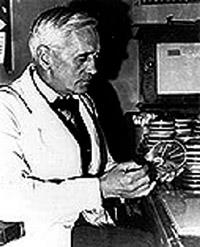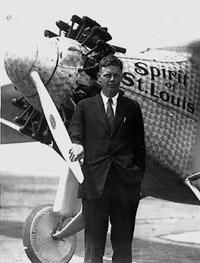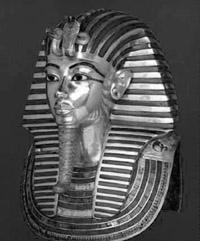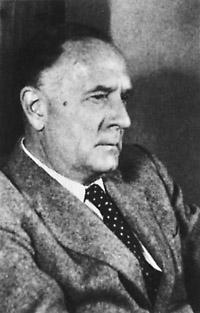They are crazy years!

On the contributions of science, theoretical physics was the field in which the most revolution occurred. During the third decade of the 20th century the foundations of quantum physics were established and developed. The father of quantum physics, the German Max Planck, affirmed at the beginning of the century that energy was absorbed, emitted and transported in sets called quanta, formulating the basic equation of energy. Planck's work and the concept of discontinuity were fundamental in all the work done in quantum physics in the 1920s. French De Broglie discovered in 1924 that, in addition to light, matter behaved like waves and particles. Einstein's imputation to the matter of the same duplicity attributed to light has been fundamental to understanding the nature of electrons. What De Broglie said was converted into an equation in 1927 by Austrian physicist Erwin Schrodinger. The Schrodinger equation is the basic equation of quantum, but it is not yet fully resolved. However, and although unresolved, Schrodinger's equation explains the star of the atom with the same precision as Newton's laws explain the motion of celestial bodies.

That same year, in 1927, the German Werner Heisenberg enunciated the principle of uncertainty, a principle of great importance not only in the macroscopic world, but in the quantum world. According to the principle, the speed and position of any object cannot be known exactly at the same time, not even theoretically. This principle completely struck the heart of Modern Physics, as it brought to full knowledge of the physical phenomena of the universe the limit of Planck's quantum, that is, it questioned the ability of Physics to fully know and master the law of nature. Works by Planck, Rutherford, De Broglie, Schrodinger, Heisenberg, Bohr, Einstein and Born built a bridge between classical physics and quantum physics.
But XX. In the third decade of the twentieth century not everything was theory. In those crazy years, penicillin was discovered, among others. Penicillin was a major discovery that saved many lives. The miracle was the work of Alexander Fleming in 1928. According to the books, Fleming casually discovered penicillin, the perfect bactericide; and it may be so, but there is no denying that whoever seeks it finds it. The influence of the discovery of penicillin was not sudden, as it was very difficult to get its active base. In the following decade, two Fleming auxiliaries advanced along the path opened by it, managing to chemically isolate penicillin. This allowed the industrial production of the antibiotic, which began to be used mainly from 1941. In 1945 Fleming and his two collaborators, Chain and Florey, received the Nobel Prize in Physiology and Medicine.

The discovery of penicillin and the advance that occurred in the field of electrical appliances, unlike what happened in another field and at another level, had a great influence in those years, which came to change their habits of life. In the 1920s it was a large number of new tools and inventions in this field, including the commercial washing machine with electric motor (1920). The American Lee De Forest presented in New York (1923) the film sound system. The electric recordings of the sound were started and the disc, the record player and the microphone were developed (1925). The first television broadcast in Britain, using radio technology, was produced by the hand of the Scottish engineer Jonh Logie Baird (1926). Later, in 1928, Vladimir Kosma Zworykin exposed to the public the television receiver based on a cathodic tube devised by Vladimir Kosma Zworykin himself. The first telephone cable between New York and London was installed based on radio signals. The first domestic refrigerators, General Electric (1927), were manufactured.
Like the invention of domestic use, the development of tools to leave home and head to the sky had no cuts. Growing taller, faster and faster, more and more time in the air... aircraft runners advanced in defiance. Many steps were taken in heaven, many of them gathered for history. For example, the fact that the American aviator Charles Lindbergh was touring the Atlantic for the first time without stopping, appears in all history books. The feat took place on May 21, 1927, when it landed in the French Le Bourget. The first round the world by plane dates back to 1924. In spite of this type of historical voyages, in the inventions we must mention the autogiro, pioneer of the helicopters, invented in 1923 by the Spanish Juan de la Cierva.

Those who looked at space also did so in this 1920s. It was the time when they began to take the first steps of space technology, both small and important, as the pioneers in astronautics. One of them was Robert Goddar. In 1929, using a liquid fuel called ergol, he first launched a stratospheric rocket. The American was not the only one who tried to do so, but, like him, aerospace pioneer Max Valierero publicly announced that he would make a rocket powered plane.
And spatially, the American astronomer cannot be visited. Between 1922 and 1924 he discovered that all the bodies of space were not in the Milky Way, that is, that in space there was more than one galaxy, or what is the same, that the bodies of space were grouped into groups. What seems obvious today forced astronomers to review their ideas about the cosmos. Hubble discovered in 1927 that galaxies are moving away. Astronomers discovered that the universe is not static and dynamic thanks to Hubble.
In addition to the sky and space, people stared at the ground. And he also went to the ground that to the ground. In Egypt archaeologist Howard Carter discovered the tomb of Pharaoh Tutankhamun. This tomb has undoubtedly been the most interesting in the archaeological research of ancient Egypt. Pharaoh Tutankhamun a. C. Born in 1354, he died 18 years later. Carter discovered on November 4, 1922 the tomb, tomb and great treasure of Tutankhamun. The treasure is now in the Egyptian Museum in Cairo.
Buletina
Bidali zure helbide elektronikoa eta jaso asteroko buletina zure sarrera-ontzian











